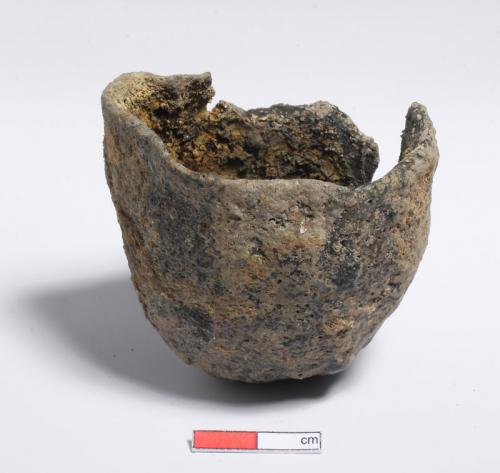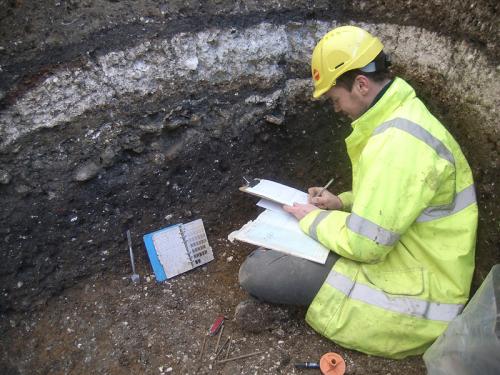The flint and cob foundations of the late medieval/early post-medieval building have been removed. Now we can see two separate plots on the site, each running from the old Jewry Street, Scowertenestret.
On the southern plot are the remains of a building, some 5m wide and running the full length of the site and beyond. No walls survive, but there are successive layers of chalk floors, which suggests that the building was in use for many years. It doesn’t look as if any industrial activity took place in the building, and the finds are domestic rubbish, some of which are of worked bone.
The plot to the north is quite different. Here there is a building roughly 8m by 5m, its longer length parallel with the old street. It had two principal rooms, similar in size. In one of them, parts of the chalk and flint floors have survived, together with holes for posts which must once have supported some timber structure.
In the other room there was a quantity of slag – waste from iron working. Outside, at the rear of the building, several pits contained more iron-working debris.
A small metal-working crucible was discovered in one pit. It is made of fine clay and dates to the early medieval period. Without analysing the residue inside it, we can’t say whether the crucible was used for copper-alloy or silver. Pits at the back of the building contained more iron-smithing waste. This workshop, which was re-floored on several occasions, appears to date from the tenth to twelfth centuries.

A fine crucible was found in one of the pits. It would have been used in the manufacture of copper or silver objects.
Medieval ‘Scowertenestret’, or Shoemakers street, was not confined to one industry, it would seem, and documentary records back this up. An early twelfth century survey of Winchester records a goldsmith in the street. Fourteenth century records show a wide range of artisans and trades including smiths, cutlers, butchers, skinners, tanners, fullers, weavers and tailors, all occupying properties owned by either the King, the Bishop, or Hyde Abbey; this was a prosperous and industrious part of the town.
